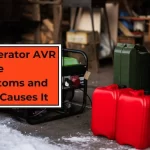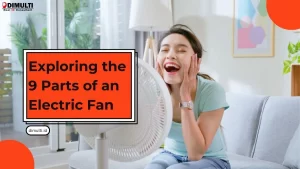How to Make a Generator Quiet – Does the noise of the generator often disturb the peace around you?
Generators are a lifesaver when the electricity goes off, but the noise generated is often a disturbing problem. Then, how do you suppress the sound of the generator so it’s not too noisy?
Despite being quite noisy, the generator remains a very important tool to provide backup power in a variety of situations.
Also Read
Therefore, there is no need to worry about it, as there are a number of simple solutions that can be applied to solve this problem and create a quieter environment around your generator.
From the use of sound suppressant materials to the right placement techniques, here are some practical tips on how to suppress the sound of the generator so you can enjoy the benefits without excessive noise disturbance.
So, let’s take a look at how to make a generator quiet!
Table of Contents
How to Make a Generator Quiet

Reducing the noise of a generator can be done in a few simple ways to make the surrounding environment or operational activities also quieter.
Here are some ways to suppress the sound of the generator that you can apply:
1. Built a Special Room for Your Generator
Building a special room for generators is the first way to manage the noise from generators. The rooms are designed with walls and ceilings coated with sound suppression materials, such as foam suppressants or acoustic panels.
The existence of this special room is not only a physical protector of the generator from external elements, but also serves as a sound suppressant so it can reduce the level of noise that reaches the surrounding environment.
2. Put Your Generator Underground
Placing a generator in the basement is one way to suppress the sound of the generator by using the natural functions of the soil as a sound suppressant.
The basement provides an additional layer of natural sound insulation because the ground absorbs vibration and sound effectively.
The advantage is that you can use natural resources at no extra cost to create an environment that minimizes the noise.
3. Use Noise Reduction
The next way is to add a sound insulator to the components of the generator that cause noise.
Sound insulators, which are often made of rubber or similar materials, can help stop the transmission of vibration and sound generated by the machine.
The advantages of using a sound insulator are its easy application, affordable cost, and significant results in reducing the noise of your generators.
Also Read: “What’s the Difference Between AC and DC Generator?“

4. Use Generator Mufflers
In addition to using a sound insulator, you can also use a generator muffler that has an internal structure to suppress the excessive noise.
It is very useful to reduce the level of noise generated by the generator. Its advantage lies in the reduction of the noise directly from its source, thus effectively addressing the problem of noises produced by your generator.
5. Use Baffle Box
The ventilation system is responsible for providing sufficient airflow to cool the engine, but the disadvantage is that it needs to be arranged in such a way as not to increase noise.
Using a baffle or a special channel in a ventilation system can help direct the airflow without generating excessive noise.
Thus, a good ventilation design can reduce the possibility of overheating and maintain the stability of the generator performance without adding significant noise levels.
6. Use an External Noise Suppressor
External suppressors, such as suppressor panels or sound absorber walls, around the generator can serve as an additional barrier to the sound produced.
The advantage is that it provides extra protection against the sound of the generator, so it can often be adapted to the specific needs of the environment.
Also Read: “The Difference Between Silent And Open Generators“
7. Using a Generator’s Pads
The next one on your tips on how to make a generator quiet is by replacing a generator [ads with a vibration-absorbing material, such as rubber or sound suppressant foam, that can reduce the transmission of vibration from the generator to the surrounding structure.
An anti-vibration pads can help minimize the vibration of the engine that triggers the noise.
Using an anti-vibration pads is very useful because in addition to giving a positive effect in reducing the noise caused by vibration, this stuffs are also quite cheap and easy to install.
8. Using a Rubber Feet
Installing a rubber foot underneath the generator is one way to suppress the sound of the generators by placing rubber objects beneath it that serve to absorb vibration.
These rubber feet help reduce the vibration from the machine, thereby reducing the spread of vibration around it.
The advantage of using a rubber foot is the easy-to-install nature of it. And aside of that it can provide extra protection against noise and vibration without having to change the design or structure of the generator massively.

9. Using a Soundproof Generator Enclosure
The last way is to build an enclosure around your generator that uses a sound suppressant material.
These boxes can be designed to contain and reduce the spread of sound generated by the generator to the surrounding environment.
The advantage of the soundproof enclosure for a generator is its ability to be customizable to the characteristics of the location of use.
The enclosure box allows you to be able to control the sound of the generator according to the needs and demands of the surrounding environment.
Also Read: “What is an Inverter Generator? And What are Its Functions?“
There you have it! The 9 tips on how to make a generator quiet!
Reducing generator noise is not only a technical solution, but also to address the environmental impact of noise. Understanding the importance of how to suppress generators will help you keep the noise that occurs.
In addition to the various ways that have been discussed, one practical way to minimize the sound of the generator is to use the silent generator type.
In choosing the generators, make sure to look for the one with an SNI logo on it, as the generators with the SNI logo on it, have been tested for its quality and safety.
The SNI itself is a product approval and certification to ensure that every product and service that are sold and distributed in Indonesia has already met the Indonesian standards and regulations.
Before being issued by the SNI certificate, those said products need to undergo a rigorous set of tests to determine its quality and safety aspect.
There are few items that are mandatory to be certified by the SNI certification as you can see HERE.
Other than that, the SNI certification also covers a lot of products in a lot of industries, ranging from automobiles to agriculture.
It is also recommended to put the SNI logo on your product aside from the mandatory list above.
So, as for business owners, having the SNI certification on your product can be so beneficial for your business.
The SNI certification can be used as a key selling point for your product, and it can also be used to boost the trust from the Indonesian market to your product.
If you’re interested in that subject, kindly check the info below!
- Address: Jl. H. M. Tohir Jl. Margonda No.15, Pondok Cina, Kecamatan Beji, Kota Depok, Jawa Barat 16424 (Google Maps)
- Phone Number: (021) 27843242
- E-Mail: info[at]narmadi[dot]com















